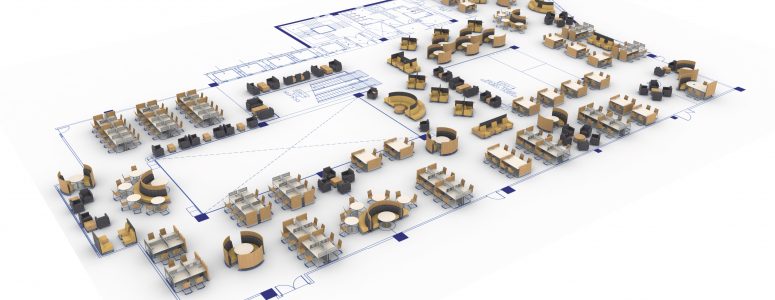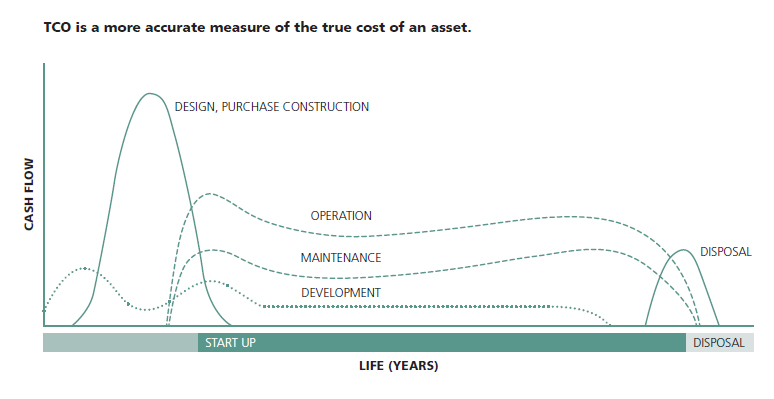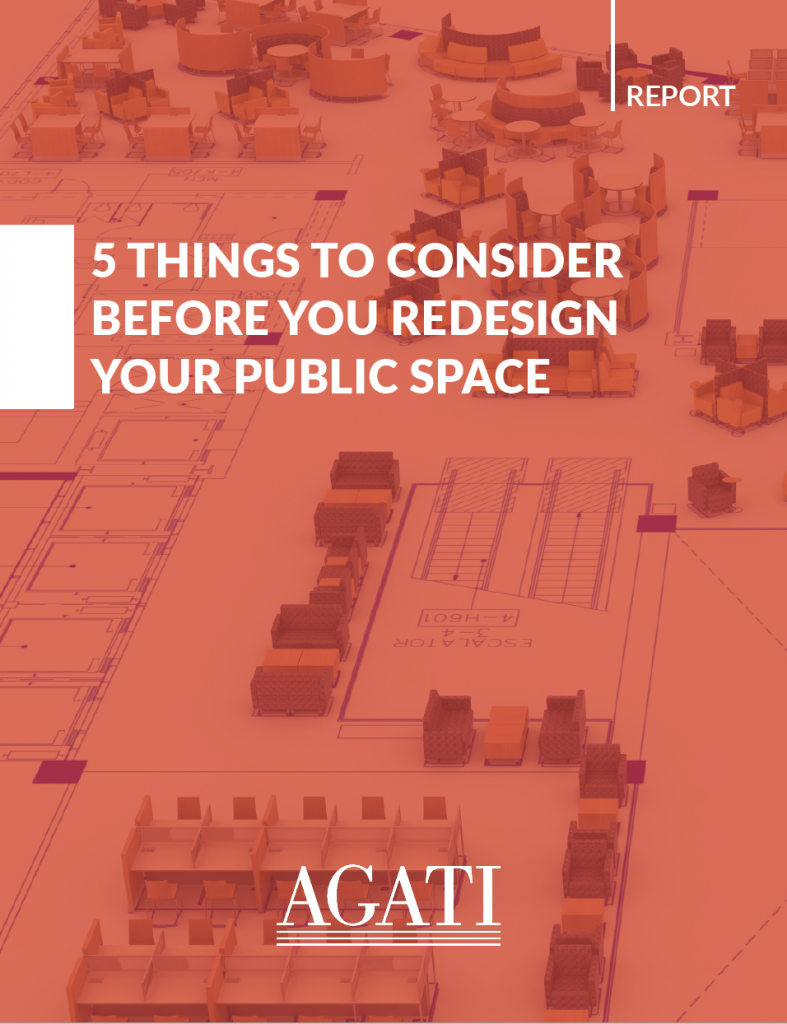
Furniture is the backbone of public spaces. It’s a key aspect of how you provide for your patrons and how they experience your facility. As we discuss in today’s article, it’s easy to be attracted to the idea of spending the lowest amount possible upfront when furnishing or refurnishing a space. However, more often than not, inexpensive furniture incurs higher long-term costs, making it the budgetary elephant in the room. Today we explore why that is along with a helpful formula you can use to determine the Total Cost of Ownership of the furniture you’re considering purchasing:
1) Base price is only the starting point
Whenever facility and asset managers are assessing proposals and quotes for new (or replacement) public space furniture, it’s easy for them to lean towards simply picking the solution with the lowest up-front cost. With budget restrictions, limited funds allocated specifically to furniture, and other cost pressures being common, it often feels like it is a sign of wisdom and competence to refurnish a space using the lowest-priced proposal.
At face value, the thought process makes sense: Why not choose the least expensive product as long as you believe it will satisfy your minimum requirements?
However, when you dig deeper, investing more upfront on furniture can actually save you money, plus the value of the productivity and health benefits that result from the investment.
The actual cost of ownership has to take many other things into account: Future repairs, potential length of use, institution reputation, and facility success, just to name a few.
2) TCO is a more accurate measure of the true cost of an asset
Making a decision based solely on the base cost assumes that costs that come later will be equal among products. But this is rarely the case.
Instead, TCO (Total Cost of Ownership) is a better measure of the total financial investment you’ll be making into the furniture you purchase.
Subsequent costs include maintenance, early replacement costs if the product has a short lifespan, reconfiguration costs when organizational change is required, and disposal costs when you reach end-of-life. And oftentimes, the relationship between TCO and product life is an inverse one: As one goes up, the other drops.
This is why making a purchase decision solely on the base cost is typically short-sighted. In many cases, you end up spending more money than was saved in the first place. With cheaper furniture, repairs are required more frequently, especially in public spaces. And furniture turnover happens more regularly due to short product lives.

3) Durability is a top consideration for public spaces (office furniture won’t do the trick)
People often don’t treat furniture in public spaces as kindly as they would if it were their own. This is important to remember when you’re deciding how you’ll furnish your space. Sure, your tables and chairs might work well the day they’re delivered. But it won’t be long before they’re wobbling and wearing down.
So the question becomes: How can we make sure our furniture is future-proof? How can we ensure our furniture functionally and aesthetically provides for our patrons for years to come?
This is a key reason why it’s important to furnish your space with furniture specifically designed to last in public spaces. A lot of times we see libraries and universities purchase office furniture and try to make it work for the extensive use in their space. But it wears down too quickly. In recent years, many office furniture manufacturers have started to market to libraries and universities. However, because they primarily design and engineer for the needs of office clients, they simply can’t create furniture that’s as functional, durable, and effective in public spaces as it needs to be.
So here are 4 key things to consider about durability when you are furnishing a new space:
- Ask a manufacturer, “Who do you mostly build for — offices or public spaces?” (Libraries always want furniture designed for public spaces. While some manufacturers consider offices public spaces, the term requires some elaboration — see #2)
- Get clarity on “public space” because the term can be used loosely. There is a significant difference between the public space in a main library that is open 18 hours a day, serving a student population of 30,000, versus the accurately defined “public space” of a reception lobby in an ivory tower for a 200-person corporation.
- Consider the traffic volume for the piece — will it be used 24/7 (i.e. a study table near your library’s entrance) or is it occasional use (a reception area outside of an auditorium, for example)?
- Will this furniture come into contact with food/drink? (This has huge implications of surfaces and fabrics.)
4) Furniture is an investment, not just a cost
The furniture you have available in your space is the backbone of a patron’s experience in your space. It’s easy to view furniture as a line item, but it has one of the most significant impacts on every aspect of your facility.
This is similar to what we’ve covered throughout the rest of today’s article, but it really comes down to a perspective shift.
Furniture isn’t just a passive item that has to be on the budget. It’s a dynamic aspect of how you accomplish your mission in your community and support each of your patrons.
Public libraries and universities rarely get capital budgets to acquire new furniture so they need their furniture to last and look good for well over a decade. When lower cost furniture fails and needs to be replaced, it is easy to assess the cost to your institution. (Original furniture cost us X and replacement furniture costs us Y, easy as that.) What is more difficult to quantify is the cost associated with having a library filled with low-quality and broken-down furniture. Instead of being a magnet for the community and a hub for the campus, a shabby looking space becomes a place people avoid. Both public and academic libraries are key ingredients to vibrant communities and campuses and the resulting financial impact to the community and campus is tangible and can have a big impact. But what is the financial impact to the community when kids do everything they can to avoid spending time at the library? What is the financial consequence to a university when the undergraduate library becomes a place that students avoid instead a tool for recruitment and retention? While these costs are more difficult to directly quantify, they are arguably the most significant costs associated with low-cost furniture that fails quickly.
When we shift this perspective, it’s easier to make sense of why TCO is a better way to frame up the value of investing in high quality furniture. A true life cycle cost analysis should include the initial purchase cost and any cost to maintain the product over the life cycle time period. Initial purchase cost, installation charges, maintenance requirements, mid-life modification costs, resulting financial implications, and the actual expected life must be factored into the analysis to yield the true monetary outlay of the organization.
5) Your furniture impacts user health, safety, and productivity
Finally, the last reason we wanted to highlight is not monetary, but practical. When we strictly make decisions on furniture based on cost, we sacrifice on the benefits for health, safety, and productivity that manufacturers of high-quality furniture prioritize.
The first issue in this regard is one of posture. You’ve probably heard it before, but good posture is really important! Negative body positions that are held for a long period of time will eventually cause unhealthy stress on our body, and affect the alignment of our spine. If our body is not naturally supported in the ways it’s supposed to be, our productivity and length of work will be directly affected. This is why it’s crucial to have library chairs that are actually designed for the specific activity they’ll be used for.
The second issue is one of comfort and confidence. Here at Agati, we do a lot of research into productivity, comfort, and security to make sure that every piece of furniture we offer is designed to help public spaces provide meaningful solutions for their patrons. The experience people have in your space matters.
A simple formula to estimate furniture TCO:
Estimating every single direct and indirect cost associated with the furniture you’re considering purchasing can definitely be complicated.
However, here’s a simplified formula that allows a fair approximation of lifetime costs:
TCO = Initial capital outlay + life-time operating costs + life-time maintenance costs + disposal cost.
From there, expressing it as a cost per year allows easy, instant, and accurate comparison of the true value for money:
TCO per year = TCO / lifespan of asset

This example is a great representation of how the longer lifespan and lower ongoing costs of high-quality furniture regularly outweighs the initial savings of choosing an average quality package.
FREE RESOURCE:
Whether it’s a full or partial redesign, it’s important to know what questions to ask and what to consider. After over 35 years of designing furniture for public spaces, we’ve learned a few things to help make the redesign a success. Download this free resource to learn 5 things to consider before you redesign:

